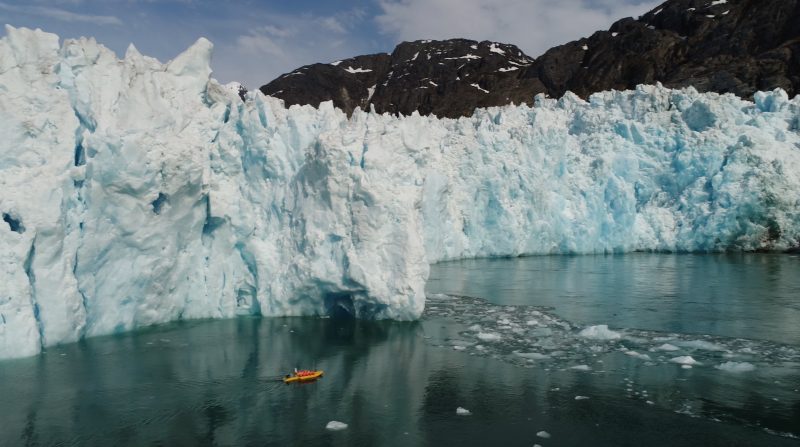Earth’s tidewater glaciers – the massive rivers of ice that end in the ocean – may be melting underwater much faster than previously thought. That’s according to a new study that used robotic kayaks to survey the ocean in front of 20-mile-long (32-km-long) LeConte Glacier in Alaska. It’s a dangerous area for ships, because tidewater glaciers – like LaConte Glacier – often calve numerous small icebergs. That is, falling slabs of ice break from glaciers and crash into the water and spawn huge waves. The seaborne robots made it possible for the first time to analyze the glacier’s plumes of meltwater released into the ocean.

Rutgers University’s Rebecca Jackson is lead author of the study, published November 25, 2019, in the journal Geophysical Research Letters. She said in a statement:
With the kayaks, we found a surprising signal of melting: Layers of concentrated meltwater intruding into the ocean that reveal the critical importance of a process typically neglected when modeling or estimating melt rates.
That process, according to the researchers, is what’s called ambient melting. Two kinds of underwater melting happen near glaciers. One kind occurs where freshwater discharge, from upstream melt on the glacier’s surface, drains at the base of a glacier in vigorous plumes of water. The other, ambient melting, happens where the glacier melts directly into the ocean waters, away from the discharge outlets.
The new study follows one published earlier last year in the journal Science that measured glacier melt rates by pointing sonar at the LeConte Glacier from a distant ship. Those researchers found melt rates far higher than expected but couldn’t explain why. The new study found that ambient melting is a significant part of the underwater mix.

Bottom line: Robotic kayaks surveyed the water in front of Alaska’s LeConte Glacier – an area too dangerous for ships – to analyze how much glacial ice is melting into the ocean.
Source: Meltwater Intrusions Reveal Mechanisms for Rapid Submarine Melt at a Tidewater Glacier











